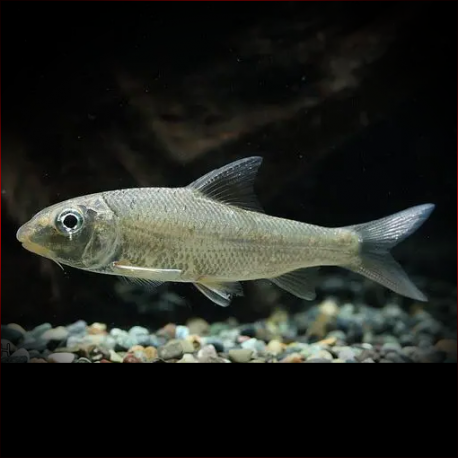More info
Datasheet
| Minimum Tank Size | 650 litres / 171.71 US gallons |
| Maximum Size | 20.0cm / 7.87inches |
| Temperature | 18°C / 64.40°F - 25°C / 77.00°F |
| Hardness | 5.04dgH / 90ppm - 20.00dgH / 357ppm |
| pH | 6.0-7.5 |
General Description
Chagunius baileyi, commonly known as Bailey's Chagunius, is a member of the Cyprinidae family and belongs to the Cypriniformes order. This species can reach a maximum size of 20.0cm in length and is endemic to the Salween and Sittaung river basins in Myanmar and western Thailand.
Aquarium Setup
When setting up an aquarium for Chagunius baileyi, a tank size of at least 650 litres is recommended due to their shoaling nature and adult size. The ideal tank should mimic a flowing river environment, with rock, gravel, sand substrates, water-worn boulders, and driftwood branches. Maintaining pristine water quality with high oxygen levels and water movement is crucial for their well-being. Additionally, a secure cover is necessary as these fish can be skittish and may attempt to leap.
Behaviour
This species tends to swim in loose aggregations in their natural habitat and displays shoaling behavior. They establish a pecking order within the group, making it advisable to keep them in groups of six or more for a more natural display and to observe their interactions with conspecifics. While generally peaceful, they may exhibit shy or skittish behavior if kept singly or in small numbers, emphasizing the importance of adequate tank mates selection and space provision.
Feeding and Diet
Chagunius baileyi is classified as a foraging micropredator, with younger individuals primarily consuming aquatic invertebrates and adults feeding on fine sediment. To maintain optimal condition, they should be offered a diet consisting of small live and frozen foods such as bloodworms, Daphnia, Artemia, along with high-quality dried flakes and granules.
Reproduction & Dimorphism
There is no recorded information on the reproduction of Chagunius baileyi. Adult males of this species develop noticeable tubercules on their head, while females do not, serving as a sexual dimorphic characteristic.
Habitat and Distribution
These fish inhabit highland rivers and tributaries with clear water, rock, gravel, and sand substrates. They can be found in areas with rapids, moderate currents, and aquatic vegetation. Chagunius baileyi is specifically endemic to the Salween and Sittaung river basins, primarily concentrated along the border region between Myanmar and western Thailand. Their distribution and morphology suggest an evolutionary link between Indian and Southeast Asian barbs.

